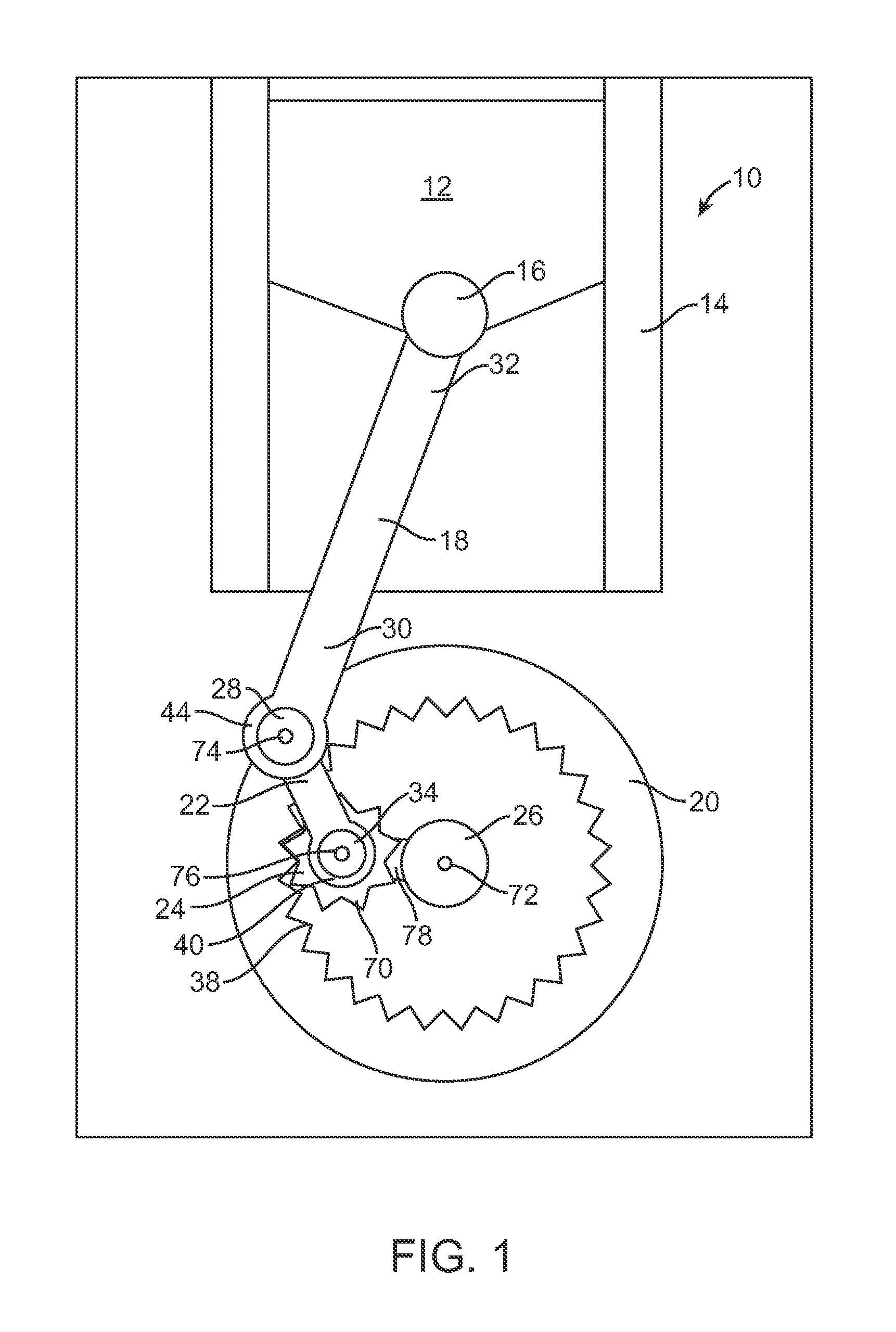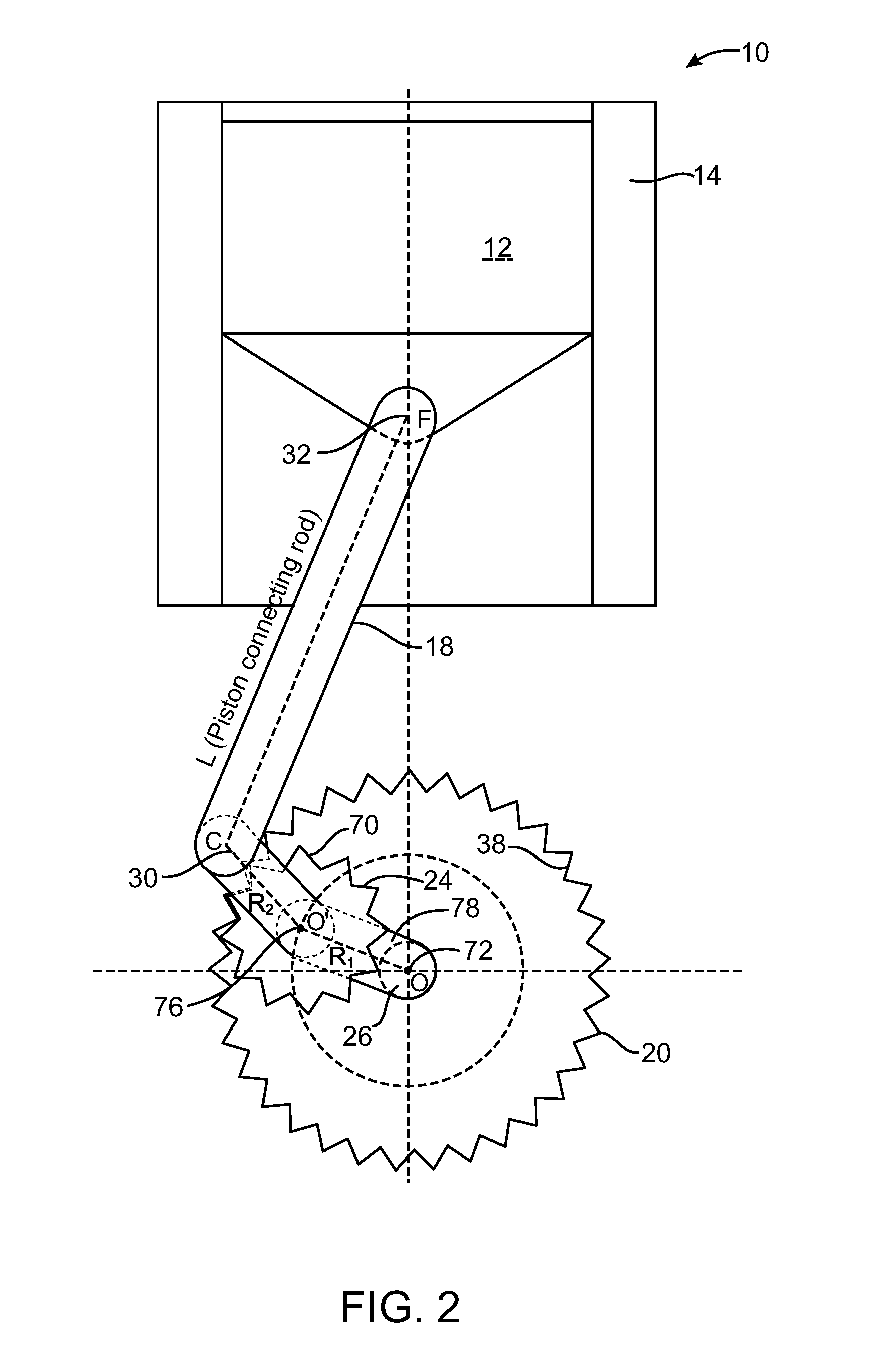Radial internal combustion engine with different stroke volumes
a technology of internal combustion engine and stroke volume, which is applied in the direction of positive displacement engine, bearing, shaft and bearing, etc., can solve the problems of unnecessary waste of energy, increased cost and inconvenience, etc., and achieves the effects of increasing combustion excursion, saving energy, and increasing power outpu
- Summary
- Abstract
- Description
- Claims
- Application Information
AI Technical Summary
Benefits of technology
Problems solved by technology
Method used
Image
Examples
example 1
n=4, m=1
[0065]In this example, OFmax=4.90 R1 and appears at the angle of θ=5°. By Formulas 2 and 3, OF at end of intake=4 R1 and at the end of combustion=2 R1, so the length of intake=4.90 R1−4 R1=0.90 R1 and length of combustion=2.90 R1. Thus, the ratio of combustion to intake is (2.90 / 0.90)=3.22 and if the compression ratio is 8, expansion ratio will be 3.22×8=25.76. FIG. 8 schematically shows four different cycles of this example.
example 2
n=4, m=0.8
[0066]In this example, OFmax=4.72 R1 at angle of θ=10°, and OF at the end of intake=4.2 R1. The length of the intake stroke=0.52 R1, and the length of the combustion stroke=2.52 R1 Thus, the ratio of combustion to intake=(2.52 / 0.52)=4.84. If the compression ratio is 8, then the expansion ratio is 4.84×8=38.72.
example 3
n=3 m=1
[0067]In this example, OFmax=3.84 R1 at angle θ=4°, and OF at the end of intake=3 R1 and at the end of combustion=R1, thus, the length of the intake stroke=0.84 R1, and the length of the combustion stroke=2.84 R1. The ratio of combustion to intake lengths=(2.84 / 0.84)=3.38, and with a compression ratio of 8, the expansion ratio=3.38×8=27.
PUM
 Login to View More
Login to View More Abstract
Description
Claims
Application Information
 Login to View More
Login to View More - R&D
- Intellectual Property
- Life Sciences
- Materials
- Tech Scout
- Unparalleled Data Quality
- Higher Quality Content
- 60% Fewer Hallucinations
Browse by: Latest US Patents, China's latest patents, Technical Efficacy Thesaurus, Application Domain, Technology Topic, Popular Technical Reports.
© 2025 PatSnap. All rights reserved.Legal|Privacy policy|Modern Slavery Act Transparency Statement|Sitemap|About US| Contact US: help@patsnap.com



